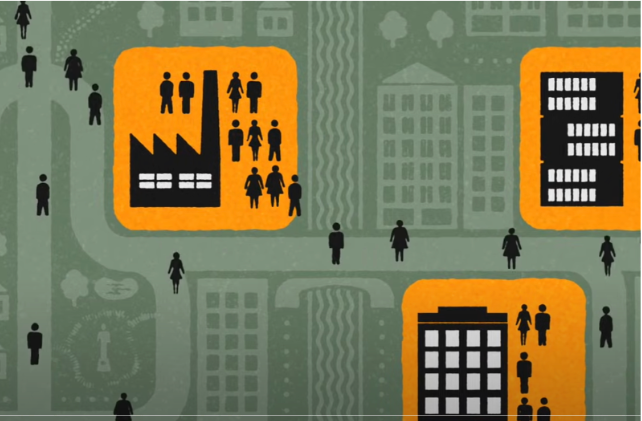News
Latest Job Openings Report Signals Cooling U.S. Labor Market, But Is That Good News?

Source: YouTube
In a crucial development for the U.S. economy, the latest Job Openings and Labor Turnover Survey (JOLTS) shows job openings dropping significantly, signaling a return to a more balanced labor market. Released on October 29, the job openings report reveals that job openings reached 7.4 million at the end of September, down from 7.86 million in August. This decline moves the job market back toward pre-pandemic levels, easing concerns of an overheating market but raising questions about future economic growth.
The Shifting U.S. Labor Market: A Brief Background
Historically, the U.S. labor market has experienced varying levels of tightness based on economic cycles. Before the COVID-19 pandemic, job openings hovered between 6.5 to 7 million, indicating a healthy demand for labor without excessive strain on employers to fill positions. However, the pandemic unleashed unique challenges, leading to a surge in job openings as businesses scrambled to hire workers, peaking at over 11 million openings in 2022. This imbalance in labor supply and demand drove up wages and fueled inflation, pushing the Federal Reserve to implement interest rate hikes to cool the economy.
The latest job openings report marks a turning point in this post-pandemic labor cycle. With job openings now at levels reminiscent of 2018 and 2019, some economists suggest the market is stabilizing. Gregory Daco, EY chief economist, emphasizes this sentiment, stating that the latest figures indicate “much less tightness” than in recent yearsxamining the Cooling Trend in the Labor Market
Latest Job Openings Report Says We’re Back to Pre-Pandemic Levels in the Labor Market
According to the job openings report, the decrease in openings spans multiple industries. Health care and social assistance, which have driven significant job growth over the last few years, saw a notable decline in available positions. This dip is coupled with an increase in hires, which rose from 5.44 million in August to 5.56 million in September. Layoffs also ticked up, reaching 1.83 million from August’s 1.67 million, hinting that employers are more selective in workforce retention.
The “quits rate,” a measure of workers’ confidence to leave their roles for better opportunities, dropped to 1.9%—its lowest level since 2015, outside of the pandemic. Elizabeth Renter, NerdWallet’s senior economist, interprets these indicators as a sign of a “cooler labor market” compared to previous years. The declining quits rate suggests a shift in worker leverage, as fewer employees feel compelled to seek new jobs due to competitive wage offers .
Econdds that these changes imply a notable decline in worker leverage compared to the peak of the “Great Resignation,” when workers were leaving jobs in droves for better-paying positions. Now, layoffs are rising, and quits are falling, signaling a shift away from the job-seeker advantage that characterized the last few years .
September Job Openings Report Implications
The current cooling in job openings offers mixed implications. While a less strained labor market could ease inflationary pressures, it might also reflect weakened economic demand. Historically, the Federal Reserve has aimed for a labor market that balances available jobs with available workers, avoiding excessive wage-driven inflation without undermining economic growth. This latest report arrives just days before the Fed’s November meeting, where policymakers are expected to consider further interest rate adjustments.
The subdued job openings could be advantageous for the Fed’s inflation management strategy. Lower openings and quits may help stabilize wage growth, diminishing inflation risks. At the same time, an overcooling job market could signal caution for economic growth as businesses slow down on hiring. Current expectations suggest that the Fed will proceed with a 25 basis point rate cut in November, marking a continuation of the easing path it resumed in September.
Is This Shift a Positive Development?
Whether the cooling job market is beneficial remains open to interpretation. On one hand, easing labor market conditions can signal stability after a period of high inflation and excessive demand for labor. Lower numbers from the job openings report mean reduced inflationary wage pressures, which provide relief for both businesses and the Fed’s inflation goals. However, a continuously slowing market could signal a potential downturn, where companies might curb expansion plans, reducing overall economic growth.
Ultimately, the latest job openings report underscores a delicate balance: a labor market that is no longer overheated, yet cautiously tempered. While this balance may align with the Fed’s goals, it also leaves room for uncertainty as businesses and workers adjust to a less dynamic labor environment.
Do you think the cooling labor market in the latest job openings report is a positive sign for the economy? Tell us what you think!



